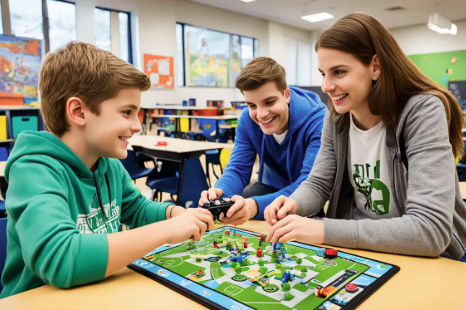Article:
In 2025, educators are placing a stronger focus on inclusion, ensuring that every student—regardless of background, ability, or learning style—can thrive in the classroom. Personalized learning is emerging as a key strategy to achieve this vision of inclusive education. By adapting instruction to meet individual needs, personalized learning creates a more equitable, responsive, and supportive environment for all learners.
What Makes Personalized Learning Inclusive?
Personalized learning is rooted in the idea that students learn in different ways and should have access to instruction that reflects their unique strengths, interests, and challenges. Rather than expecting all students to follow the same path at the same pace, personalized learning offers flexibility in how, when, and what students learn. This allows educators to honor student diversity while still maintaining high expectations.
Addressing a Wide Range of Learning Needs
Inclusive education requires thoughtful support for students with varied learning profiles. Personalized learning can include accommodations such as alternative assessments, scaffolded tasks, and visual or auditory resources. For advanced learners, it can provide enrichment and opportunities to explore topics in greater depth. Every student receives what they need to grow, not just the same resources as everyone else.
Empowering Student Voice and Choice
Personalized learning values student input. When students are invited to help shape their learning experiences—choosing topics, formats, or projects—they feel a greater sense of belonging and purpose. This empowerment is especially important for learners who may have felt overlooked or misunderstood in more traditional educational settings.
Building Strong Relationships
At the heart of inclusive education is connection. Personalized learning encourages ongoing dialogue between students and teachers, where educators act as mentors, coaches, and collaborators. These relationships help students feel seen, heard, and supported, building trust and enhancing engagement.
Using Technology to Expand Access
Technology supports inclusion by offering features such as speech-to-text, closed captions, language translation, and adaptive content. Digital platforms can adjust to individual learning levels and offer alternative pathways, ensuring that students with different needs can participate fully and meaningfully.
Fostering a Growth Mindset
Inclusive classrooms foster the belief that all students can learn and succeed. Personalized learning reinforces this by encouraging goal-setting, celebrating progress, and allowing for mistakes as part of the learning journey. This approach helps reduce stigma and build confidence among all learners.
Conclusion
In 2025, personalized learning is not just a method—it’s a mindset that supports inclusive education. By recognizing each student as a unique learner and offering responsive, flexible instruction, educators are making classrooms more welcoming and effective. With personalized learning, inclusion becomes more than a goal—it becomes a daily reality.














